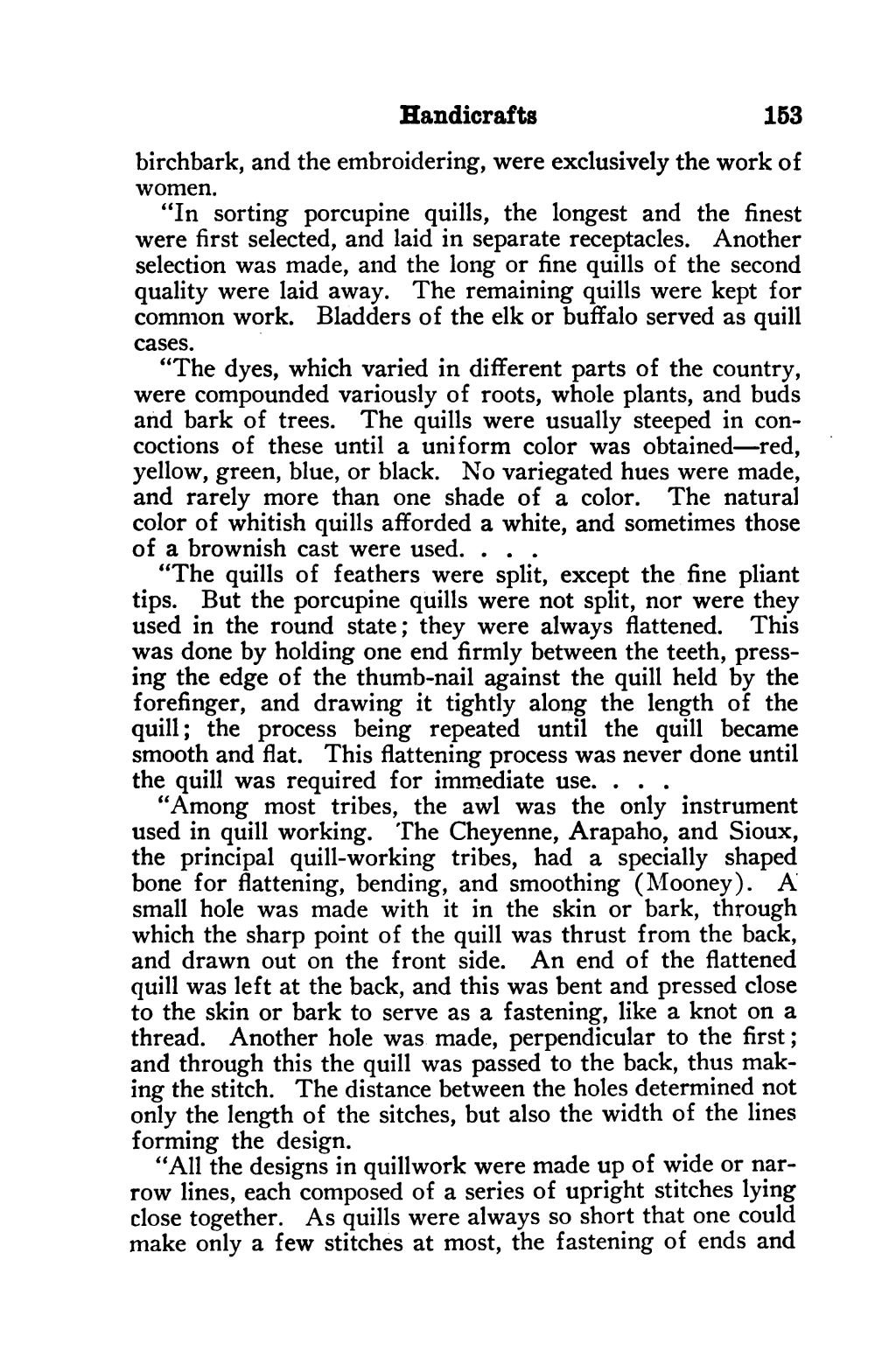Handicrafts 153 birchbark, and the embroidering, were exclusively the work of women. “In sorting porcupine quills, the longest and the finest were first selected, and laid in separate receptacles. Another selection was made, and the long or fine quills of the second quality were laid away. The remaining quills were kept for common work. Bladders of the elk or buffalo served as quill cases. “The dyes, which varied in different parts of the country, were compounded variously of roots, whole plants, and buds and bark of trees. The quills were usually steeped in con- coctions of these until a uniform color was obtained—red, yellow, green, blue, or black. No variegated hues were made, and rarely more than one shade of a color. The natural color of whitish quills afforded a white, and sometimes those of a brownish cast were used. . . . “The quills of feathers were split, except the fine pliant tips. But the porcupine quills were not split, nor were they used in the round state; they were always flattened. This was done by holding one end firmly between the teeth, press- ing the edge of the thumb-nail against the quill held by the forefinger, and drawing it tightly along the length of the quill; the process being repeated until the quill became smooth and flat. This flattening process was never done until the quill was required for immediate use... . “Among most tribes, the awl was the only instrument used in quill working. ‘The Cheyenne, Arapaho, and Sioux, the principal quill-working tribes, had a specially shaped bone for flattening, bending, and smoothing (Mooney). A small hole was made with it in the skin or bark, through which the sharp point of the quill was thrust from the back, and drawn out on the front side. An end of the flattened quill was left at the back, and this was bent and pressed close to the skin or bark to serve as a fastening, like a knot on a thread. Another hole was. made, perpendicular to the first ; and through this the quill was passed to the back, thus mak- ing the stitch. The distance between the holes determined not only the length of the sitches, but also the width of the lines forming the design. “All the designs in quillwork were made up of wide or nar- row lines, each composed of a series of upright stitches lying close together. As quills were always so short that one could make only a few stitches at most, the fastening of ends and
Stránka:roll 1931.djvu/169
Z thewoodcraft.org
Tato stránka nebyla zkontrolována
